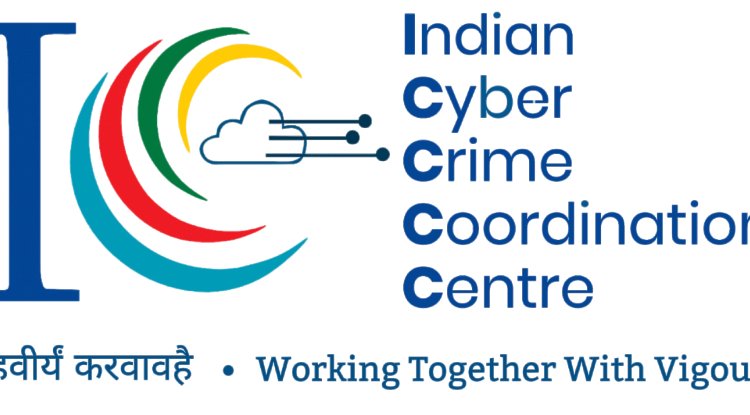Identity at Risk: Aadhaar's Dark Side in Bihar's Cybercrime Scene
Aadhaar, India’s digital identity backbone, is being exploited in Bihar’s cybercrime underworld. From biometric cloning to AePS fraud, explore how Aadhaar misuse is draining crores, fueling fraud networks, and undermining India’s digital economy.
When Aadhaar made its debut in 2009, it was hailed as the magic wand to sweep away corruption, inefficiencies, and the leaks plaguing welfare programs. Imagine—one digital identity, seamlessly tied to biometrics, bank accounts, and government schemes—empowering citizens, especially the underprivileged and unbanked. It was supposed to catapult India into a cashless, inclusive digital future.
Fast forward fifteen years, and yes, Aadhaar has indeed reshaped governance. Over 1.3 billion Indians have signed up, and this digital key now unlocks everything from subsidised rations to mobile SIM cards and digital payments. But in Bihar, one of India’s most impoverished states, the once-promising narrative has taken a sinister turn.
In districts like Madhavpura, Supaul, and Gaya, Aadhaar has morphed into a prized tool for cybercriminals. Rather than bridging gaps, it’s being cloned, forged, and hacked—fuelling a shadowy economy of fraud that rakes in hundreds of crores. The fallout? It extends far beyond individual victims, shaking the very foundations of financial trust, state revenues, and India’s ambitious digital dreams.
The Aadhaar-Crime Connection in Bihar

Bihar’s cybercrime landscape has exploded in the last five years, with Aadhaar at its heart. A few alarming patterns emerge.
Biometric Cloning and AePS Fraud
The Aadhaar-enabled Payment System (AePS)—meant to help rural folks withdraw cash using just their Aadhaar number and fingerprint has become a playground for fraudsters. Cloned fingerprints, silicone imprints, and stolen biometric data are the weapons of choice, allowing thieves to siphon off money from unsuspecting accounts. Victims, often blissfully unaware until it’s too late, watch their hard-earned savings vanish like smoke.
Illegal Aadhaar Modification
In a dramatic bust in 2024, Bihar’s Economic Offences Unit (EOU) took down a gang in Madhepura operating an Aadhaar fraud scheme. Armed with stolen software, they manipulated Aadhaar data, forged biometrics, and churned out fake cards. They even set up phoney government websites to trick people into revealing their sensitive information.
SIM Fraud and Phishing
Fake Aadhaar documents are a common ticket to obtaining SIM cards, which then fuel phishing calls, OTP scams, and interstate money laundering operations. In Supaul, police dismantled a syndicate tied to a staggering ₹40 crore cyber fraud, much of it facilitated by these counterfeit Aadhaar-based SIMs.
Criminal Commodification of Data
Aadhaar information has become a hot commodity in Bihar’s cyber black markets. Once compromised, it opens the floodgates to a slew of crimes: fake KYC for bank accounts, job scams, impersonation for loans, and even trafficking and extortion networks. A system designed to uplift the vulnerable is, ironically, being turned against them...
The Numbers Behind the Shadow
The scale of Aadhaar-related cybercrime in Bihar is mind-boggling:
- Explosion in Complaints: Cyber financial fraud complaints skyrocketed from 40,180 in 2023 to 67,380 in 2024.
- Money Lost: Financial losses surged from ₹240.21 crore in 2023 to ₹429.83 crore in 2024—nearly doubling in just one year.
- AePS Fraud’s Share: Nationally, Aadhaar-enabled payment frauds made up about 11% of cyber-enabled financial crimes in 2023, with Bihar being a key player.
- Low Recovery Rates: Between January and July 2024, Bihar’s EOU froze ₹57.52 crore from fraudsters, but only a meagre ₹4.51 crore found its way back to victims—a recovery rate that’s dishearteningly under 10%.
Each statistic tells a story: a farmer robbed of his subsidy, a pensioner left destitute, a migrant worker stranded without wages.
The Economic Fallout
The misuse of Aadhaar in Bihar casts a long shadow, with consequences that ripple through both financial and social spheres.
1. Household Ruin and Debt Traps
Victims often hail from poor or rural backgrounds, with little financial buffer. When their accounts are drained, they’re pushed into borrowing or wage advances, trapping them deeper in poverty.
2. Banks and Telecom Firms Bleeding
Banks suffer direct losses from fraudulent withdrawals, while telecom companies bleed revenue from SIM fraud and spoofing. These losses trickle down, leading to higher service charges and stricter compliance burdens for consumers.
3. Public Funds Diverted
The government pours resources into cyber-policing—specialized units, forensic labs, awareness campaigns, and legal battles. This siphoning of funds diverts much-needed resources from health, education, and development.
4. Loss of Public Trust
Perhaps the most insidious cost is the erosion of trust. If citizens feel their Aadhaar makes them vulnerable, they may shy away from digital banking, welfare transfers, or government services. This fear threatens to derail India’s ambitious $1 trillion digital economy dream.
5. Growth of a Cybercrime Ecosystem
Aadhaar-linked fraud is nurturing a parallel economy. Gangs recruit unemployed youth, training them in hacking tools, expanding their operations across states. Instead of contributing to Bihar’s growth, its youth are being funnelled into the shadows.
Why Bihar?
So, what is it about Bihar that has turned it into a hotbed for Aadhaar-enabled crime? The answer is complex, but the stakes are undeniably high. In the shadowy corners of Bihar, where the hum of daily life intertwines with the pulse of technology, a troubling narrative unfolds. Aadhaar enrolment agents and Common Service Centres (CSCs)—they wield access like a double-edged sword, sometimes twisting it to gather or manipulate sensitive data. It’s a disheartening sight, really. And then there’s the high tide of unemployment—young men, feeling the weight of economic despair, find themselves lured into the siren call of cybercrime syndicates, chasing quick cash like moths to a flame. The geography plays its part too,nestled close to Nepal and Jharkhand, notorious for financial fraud, Bihar becomes a playground for those seeking to exploit the system.
Tech vulnerabilities? They’re like open doors—criminals slip through, replaying biometric data or hacking into the very software meant to protect. Together, these social weaknesses and technological gaps create a breeding ground for exploitation, a perfect storm brewing.
Now, what's being done about it? The Bihar Police and UIDAI are scrambling, launching countermeasures that feel like band-aids on a gaping wound. They’re blocking SIMs and IMEIs tied to fraud, blacklisting retailers who sell SIMs without proper KYC, and rolling out awareness campaigns in schools and villages. Cyber Police Stations pop up across districts, but—ah, the scale of the problem is staggering. Criminals, ever-adaptive, leap to new tools and tactics while law enforcement struggles to keep pace.
So, what’s next? If Aadhaar is to stand tall as India’s digital backbone, it needs a serious overhaul—like a rusty old bike needing a complete tune-up.
First, let’s talk about citizen empowerment. Imagine a farmer, as familiar with locking and unlocking his Aadhaar as he is with the local market. Campaigns in local languages could make this a reality.
Next up, robust data protection enforcement. The Digital Personal Data Protection Act (DPDPA) shouldn’t just sit pretty on paper—let’s see strict penalties for those who misuse Aadhaar data, be they agents, CSCs, or officials.
And technology? It’s time for an upgrade. UIDAI should embrace liveness detection, AI-driven fraud analytics, and multi-factor authentication. A mere fingerprint? Not enough anymore.
Regular audits of intermediaries are crucial. CSCs and Aadhaar enrolment centres should face quarterly checks—let’s catch those anomalies before they fester.
And what about a Victim Compensation Fund? With recovery rates so dismally low, a dedicated fund could help those hit hardest by Aadhaar fraud, especially the vulnerable households.
Finally, let’s not forget the bigger picture. Bihar’s issues aren’t isolated; many fraud calls trace back to this state, targeting victims in bustling metropolises like Delhi and Mumbai, or even overseas. A national task force, connecting state police with UIDAI and banks, is essential.
In conclusion, Aadhaar stands as one of India’s most ambitious social experiments—an audacious leap into digital governance and financial inclusion. Yet, the cybercrime underbelly in Bihar reveals its vulnerabilities. The identity meant to safeguard citizens can, in the wrong hands, morph into a weapon of exploitation.
The real challenge lies not with Aadhaar itself, but with the ecosystem surrounding it—fragile data protection, a lack of awareness, and sluggish enforcement. If these cracks aren’t sealed, Aadhaar risks eroding the very trust it was designed to foster. Bihar's tale serves as a cautionary note for the nation: in this digital age, identity is both currency and weapon. Securing it isn’t just a choice; it is a pressing economic and social necessity.
Follow cyberdeepakyadav.com on
Facebook, Twitter, LinkedIn, Instagram, and YouTube
What's Your Reaction?
























